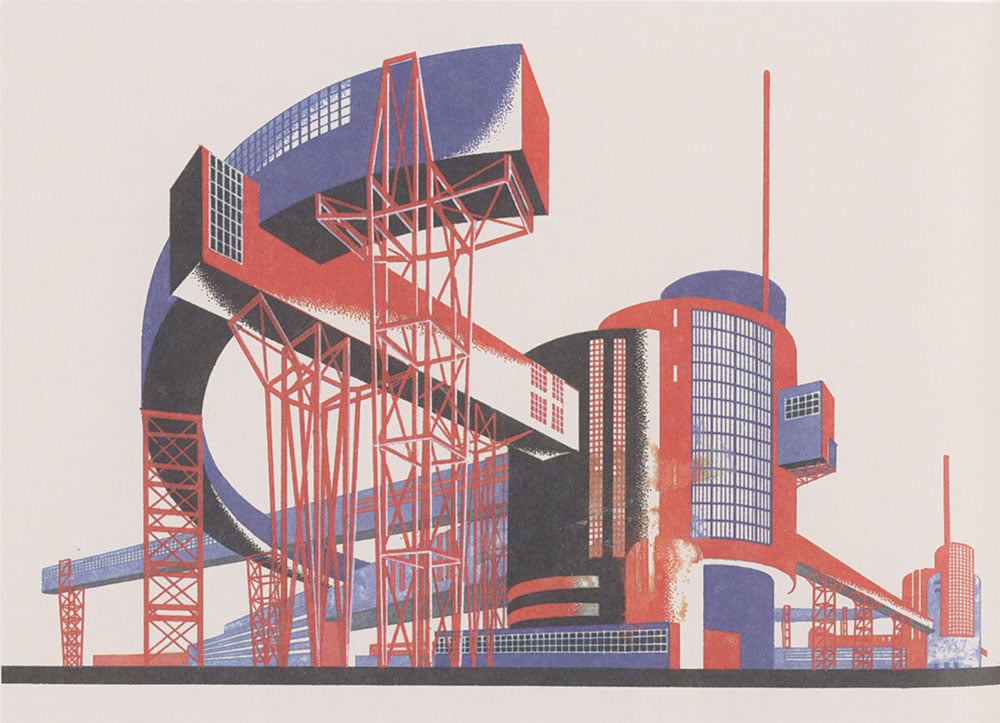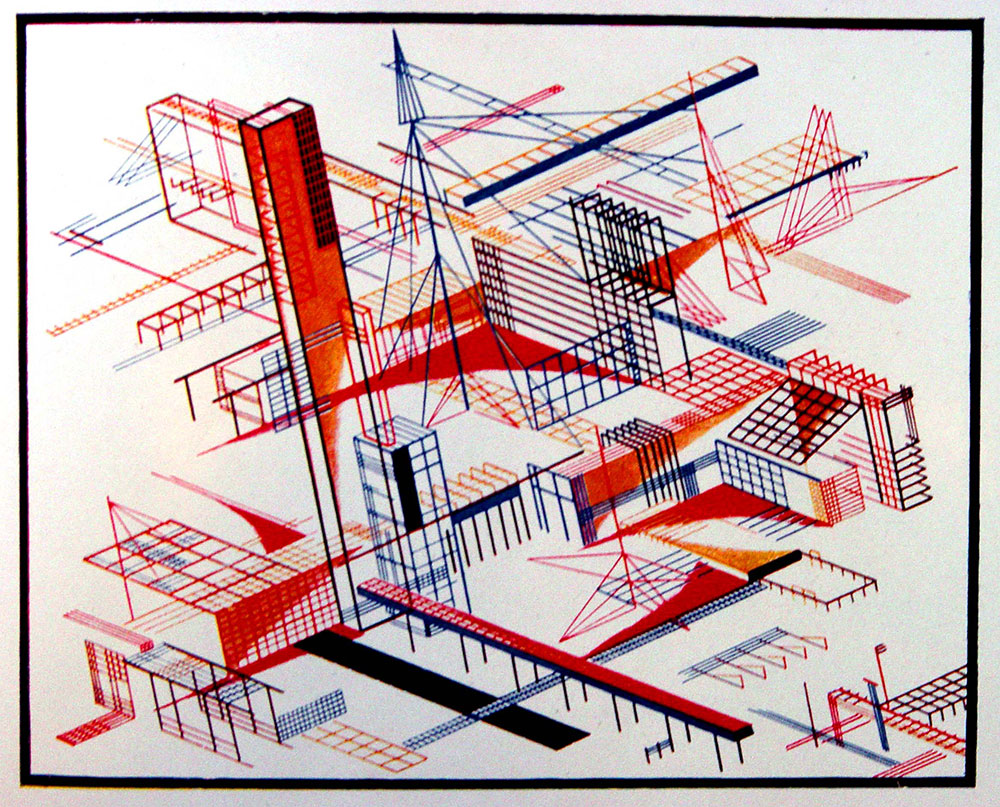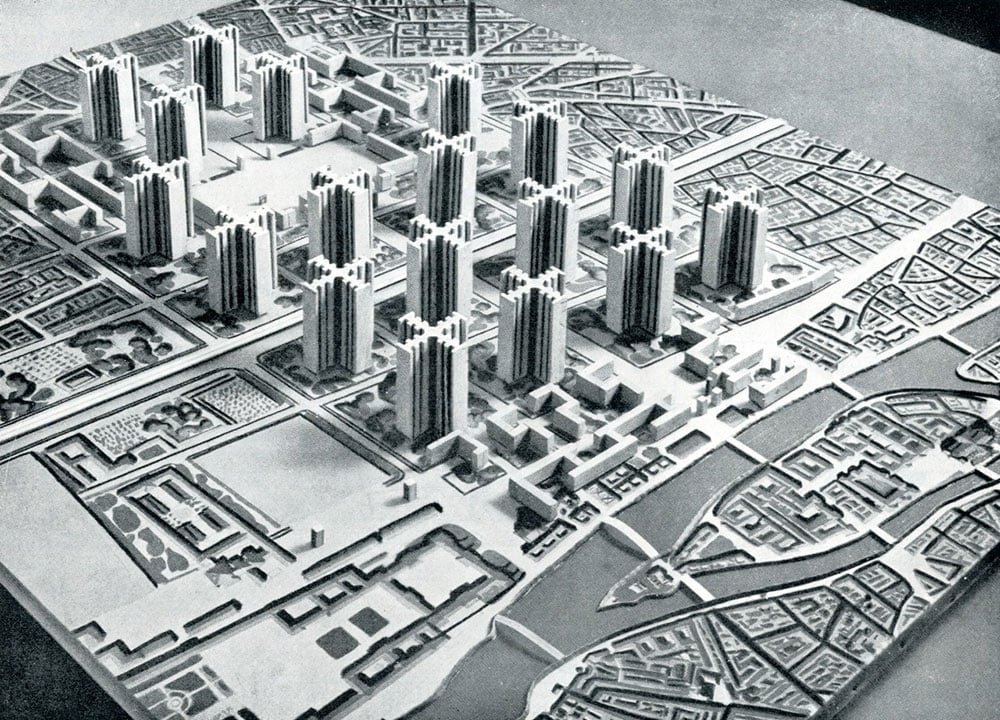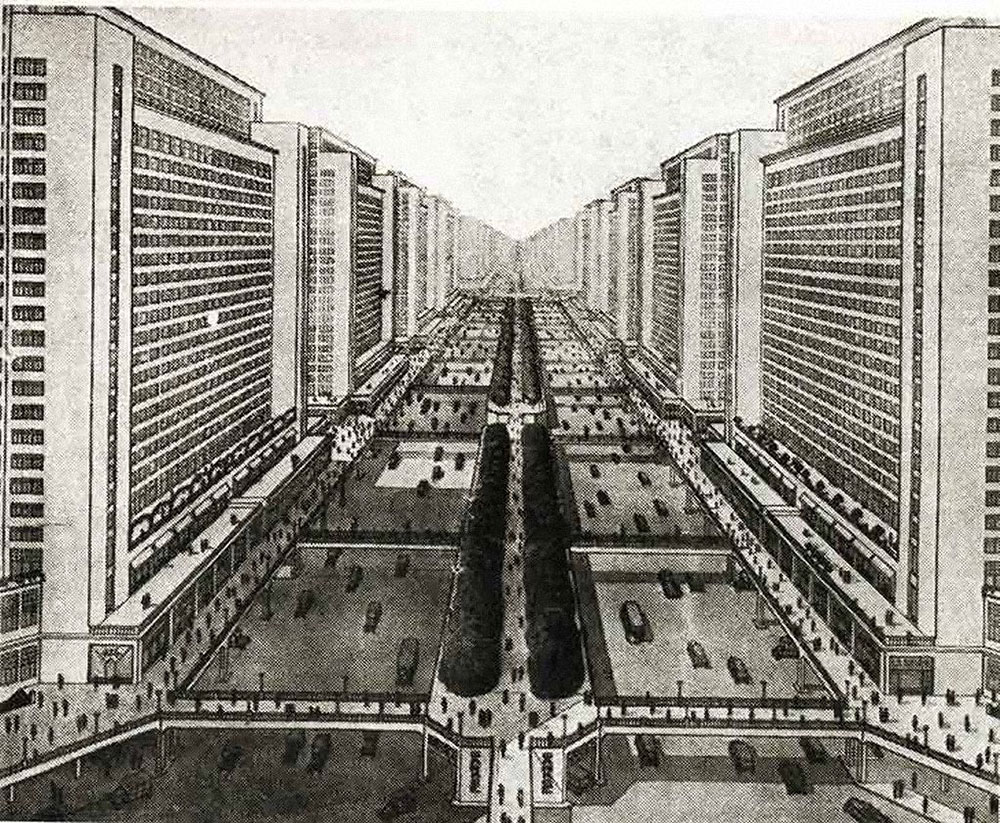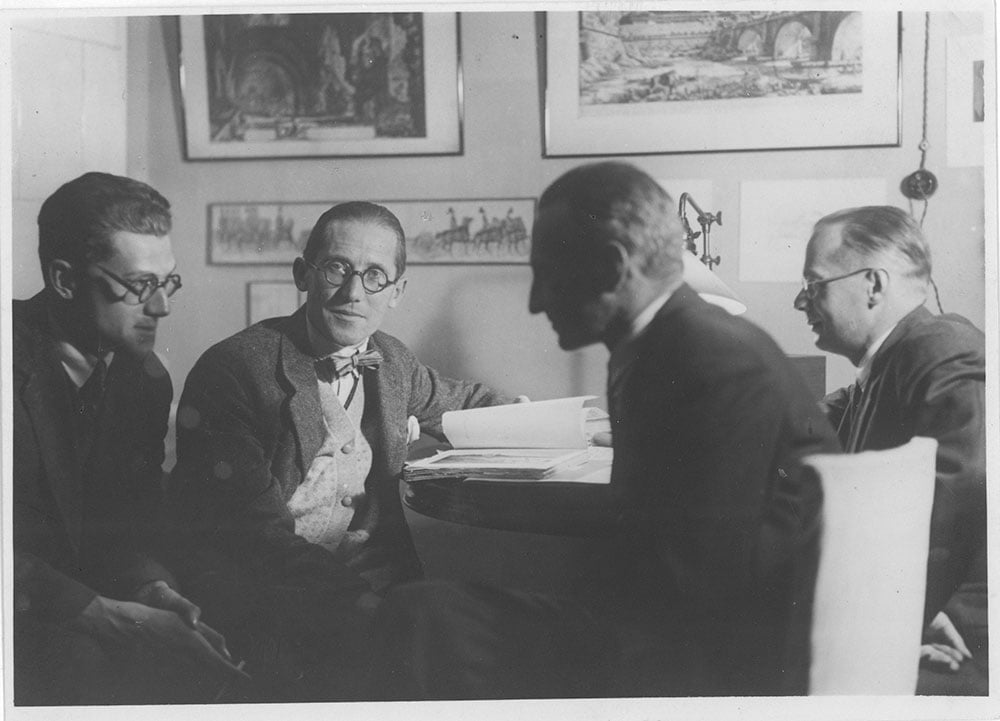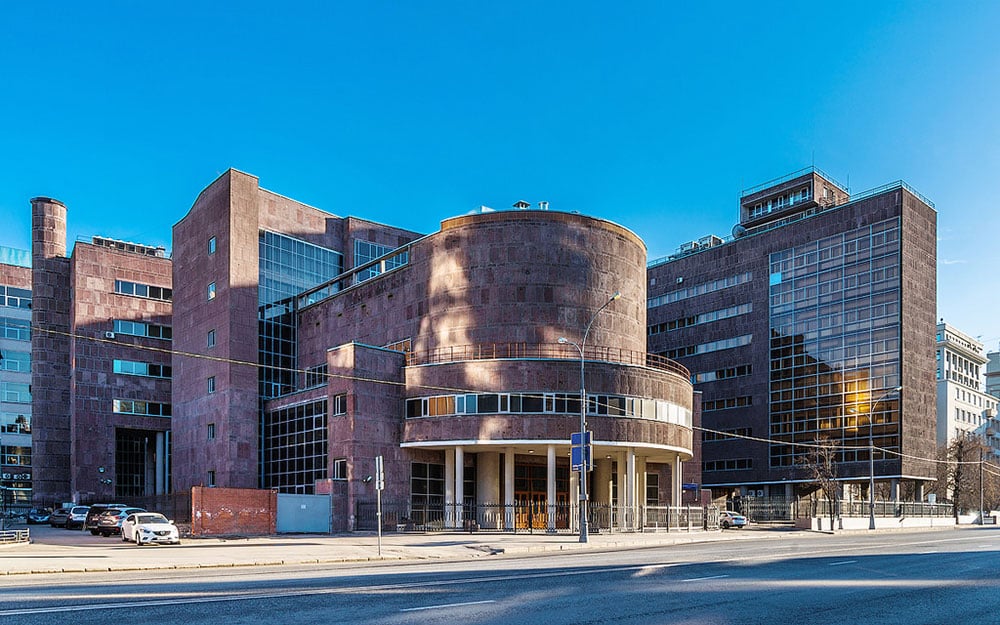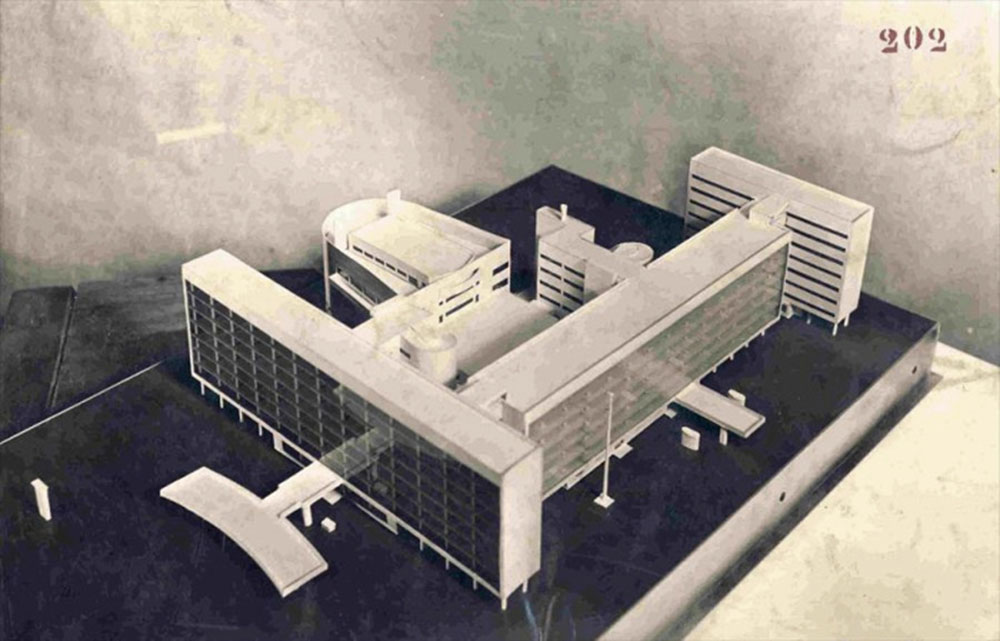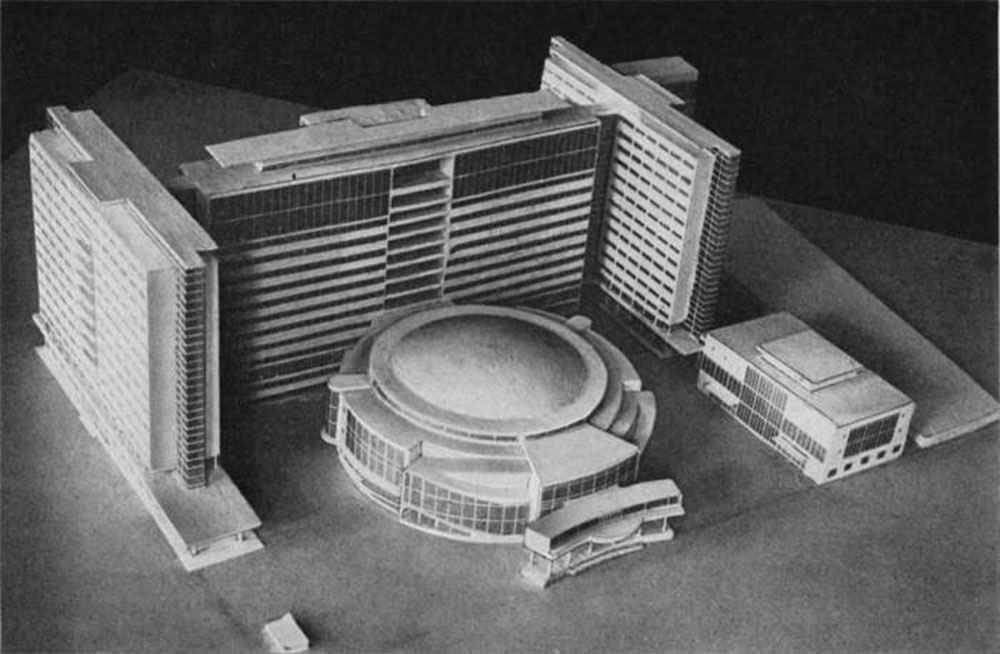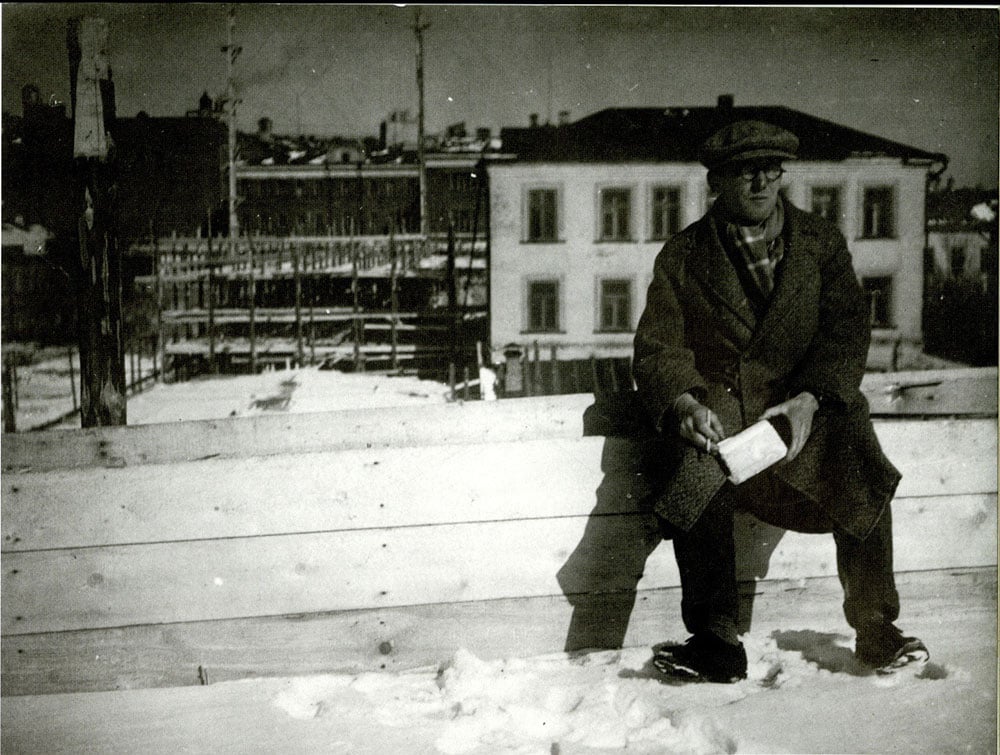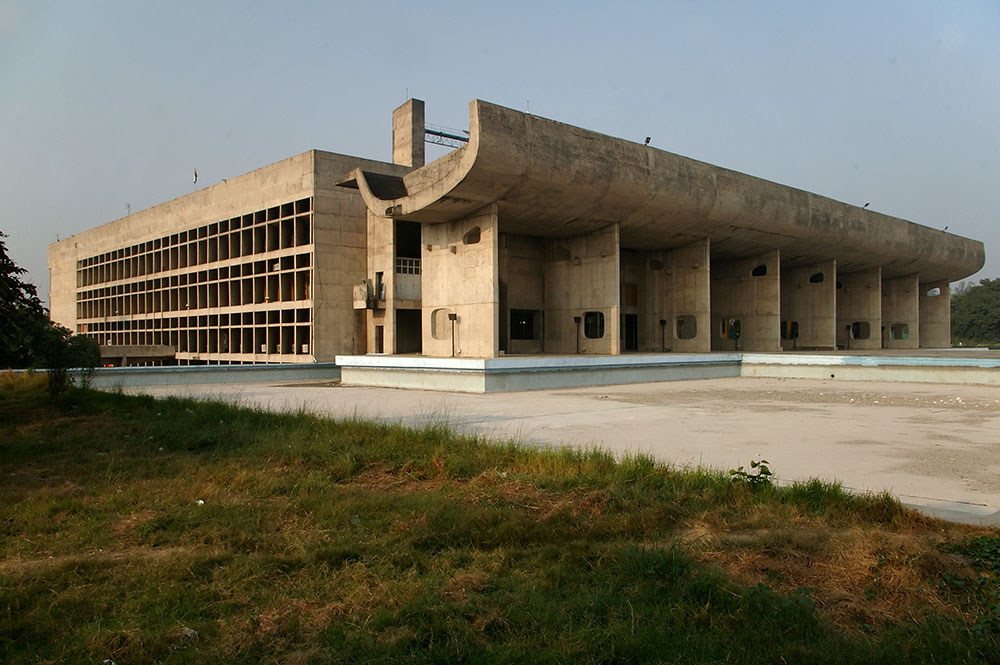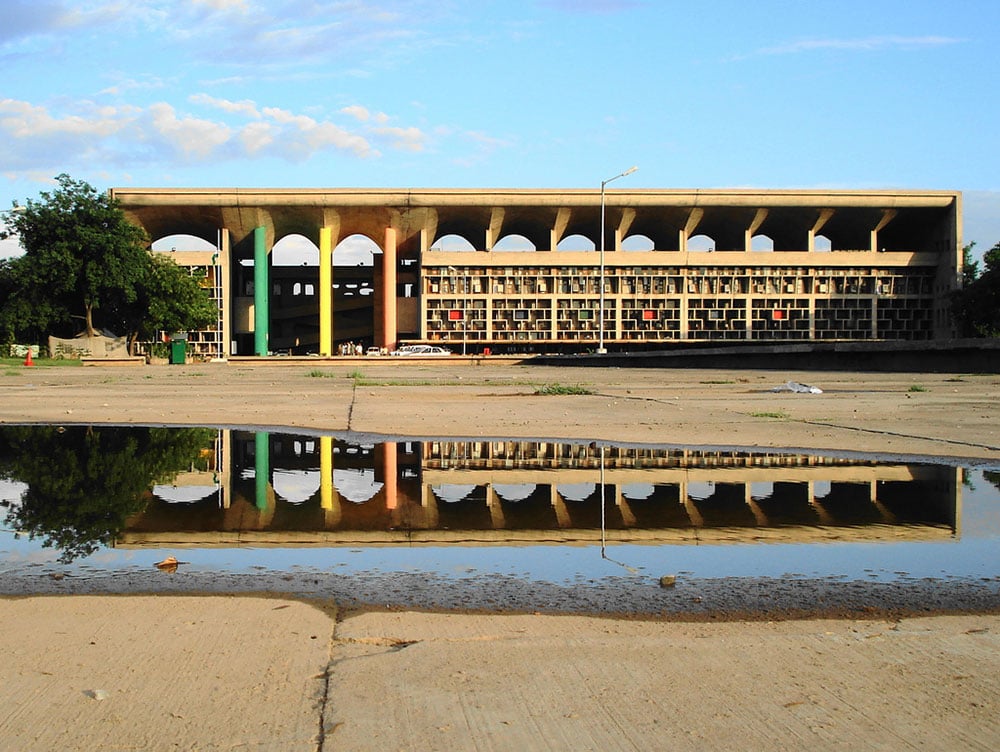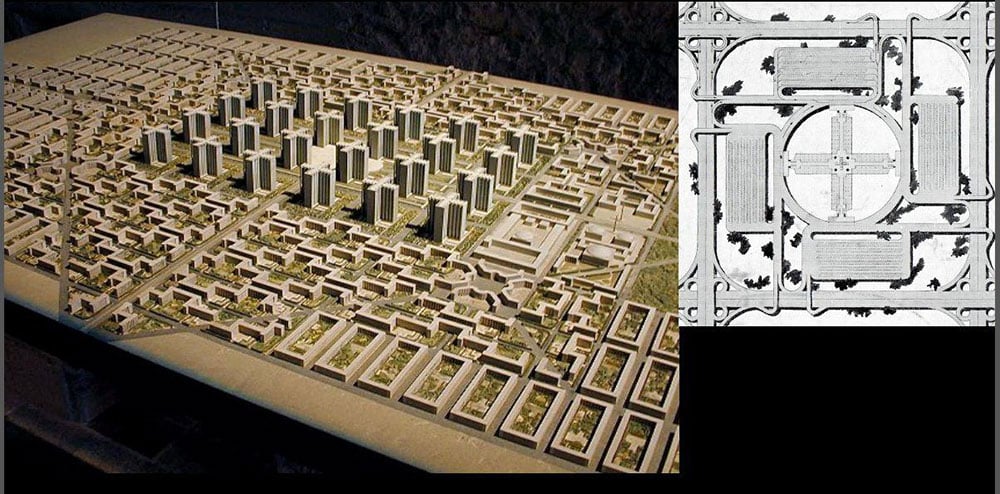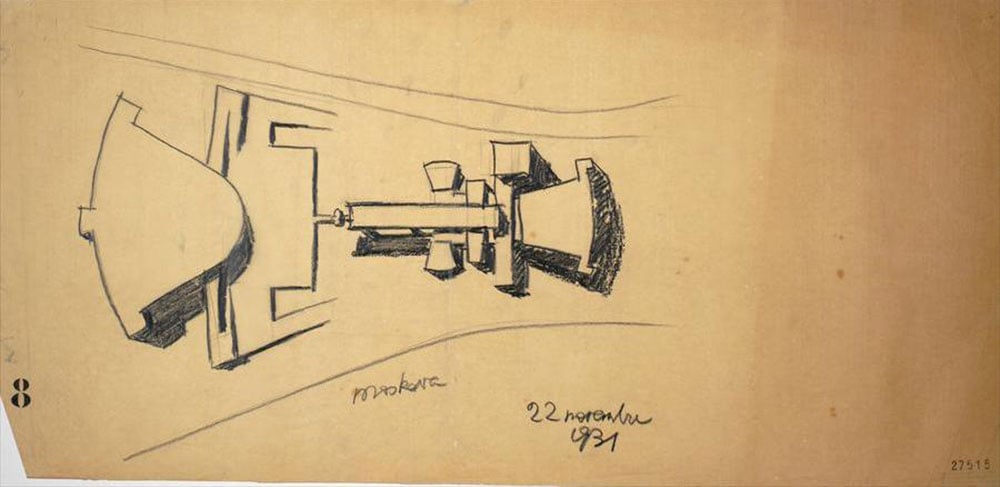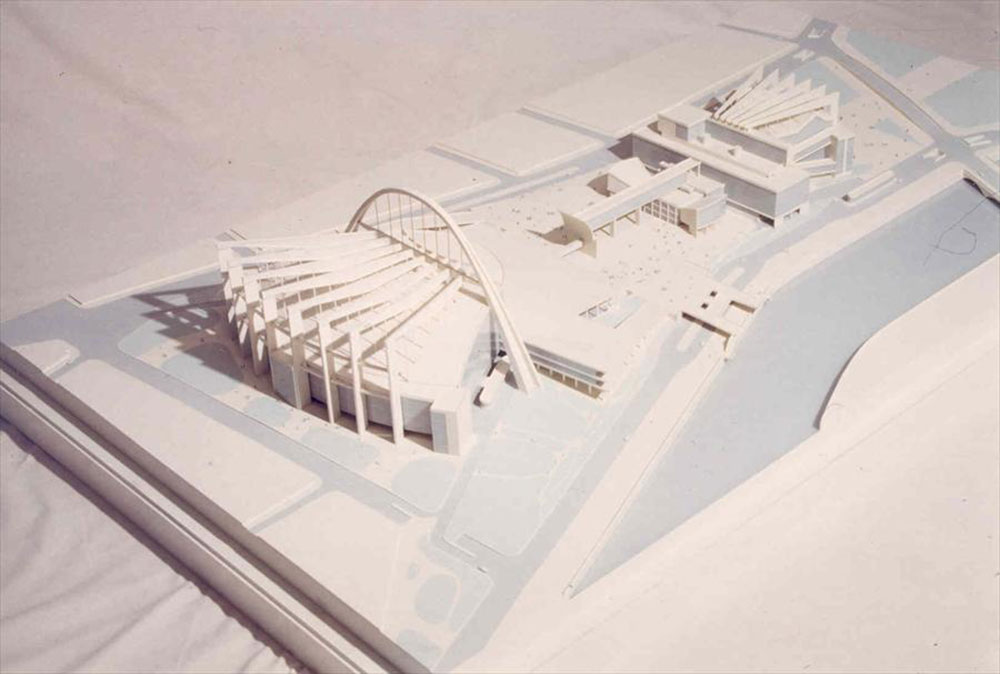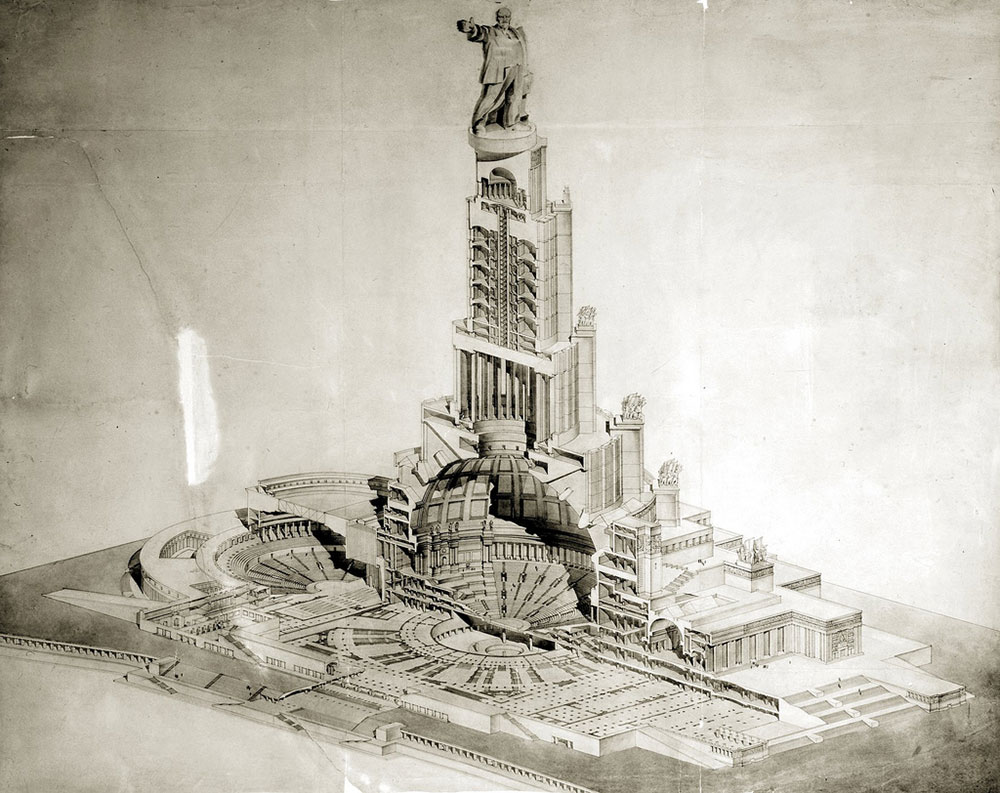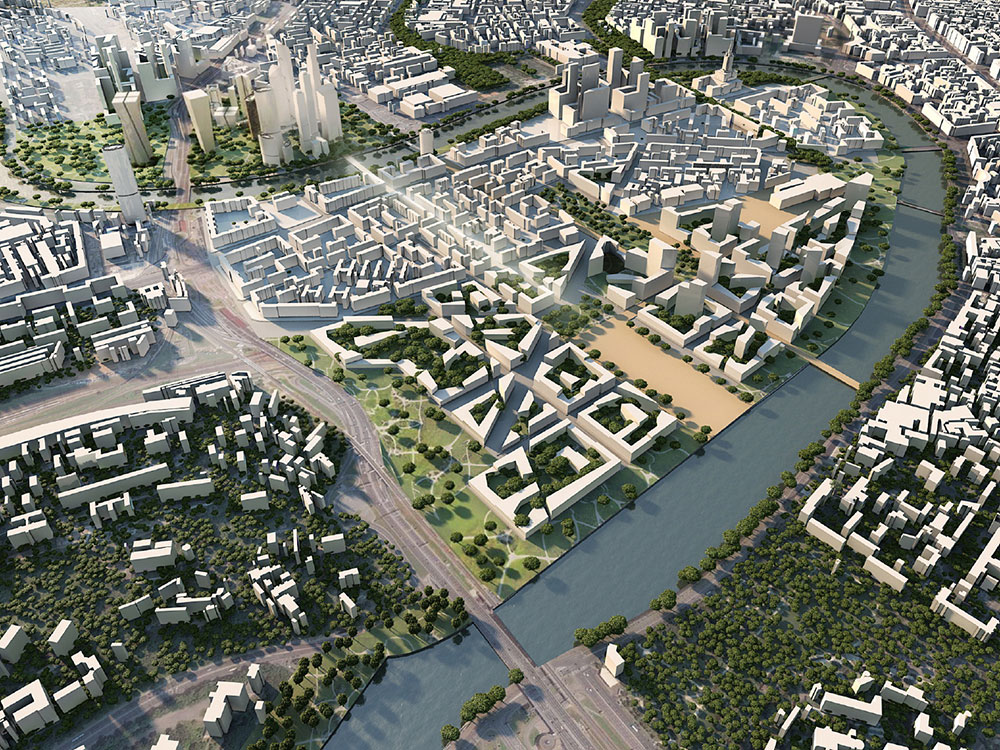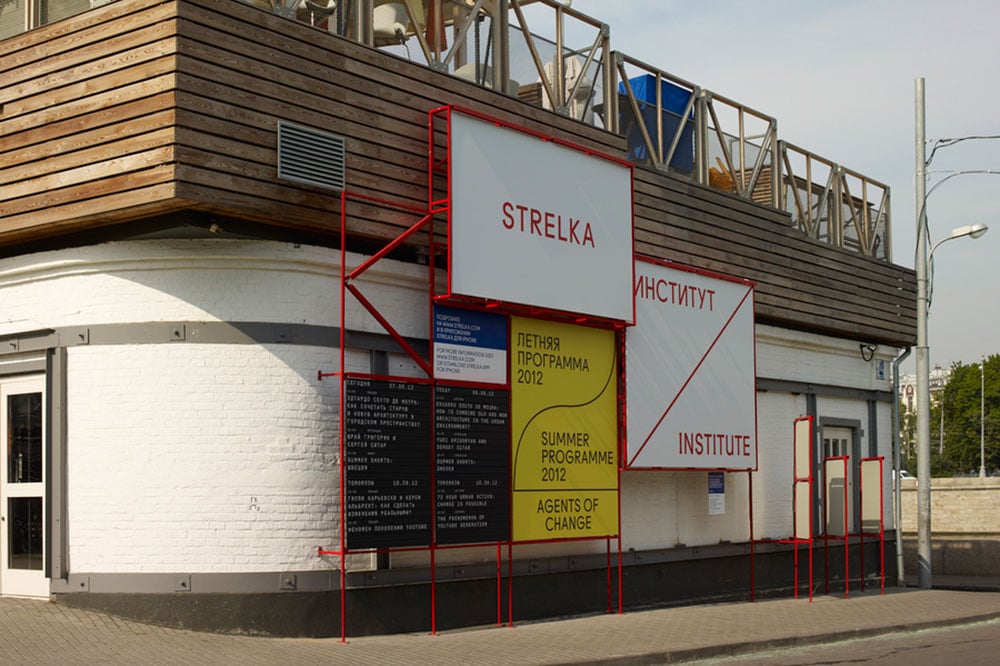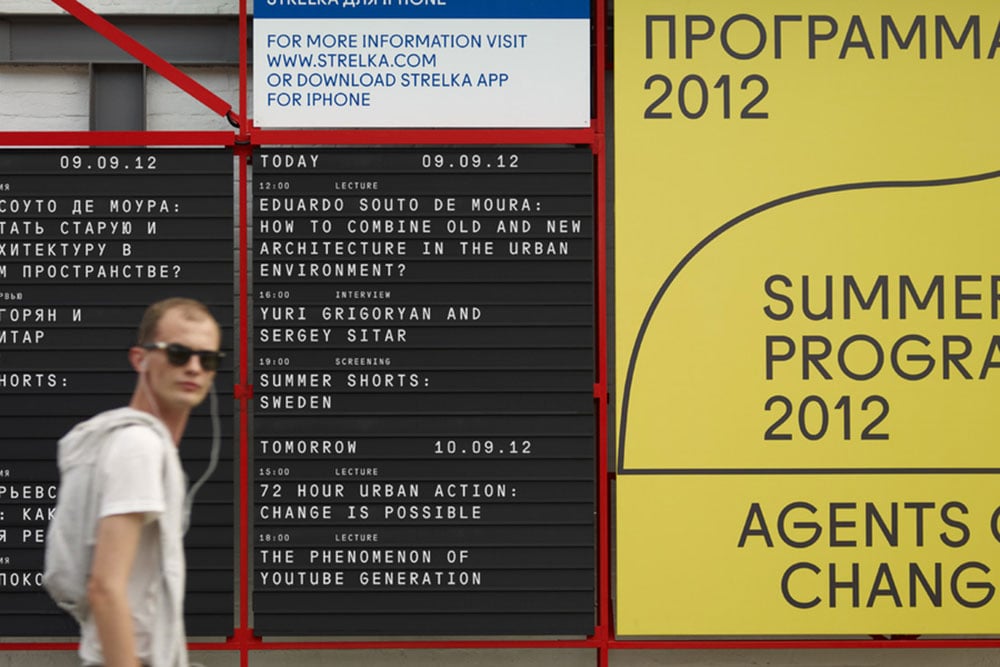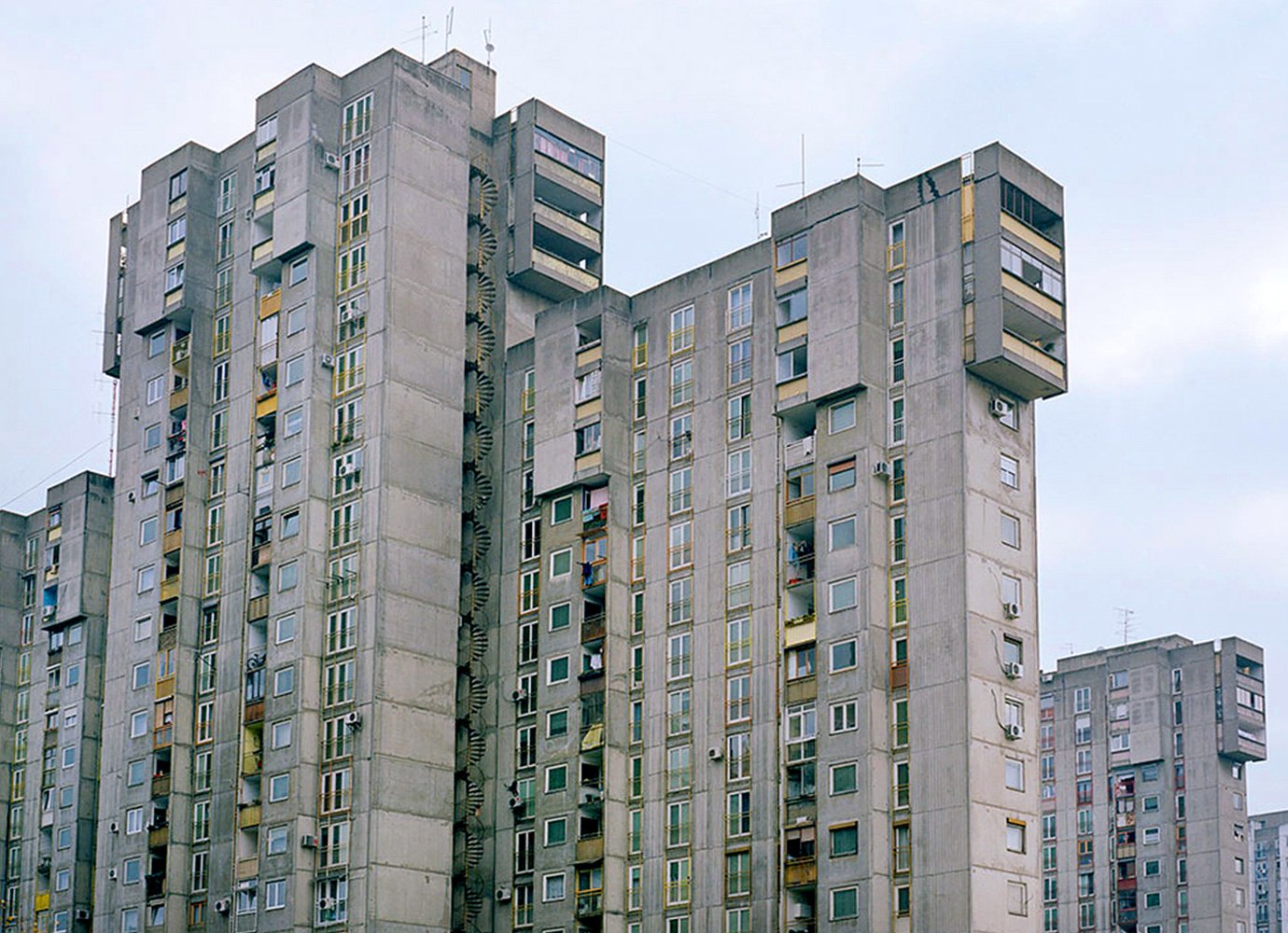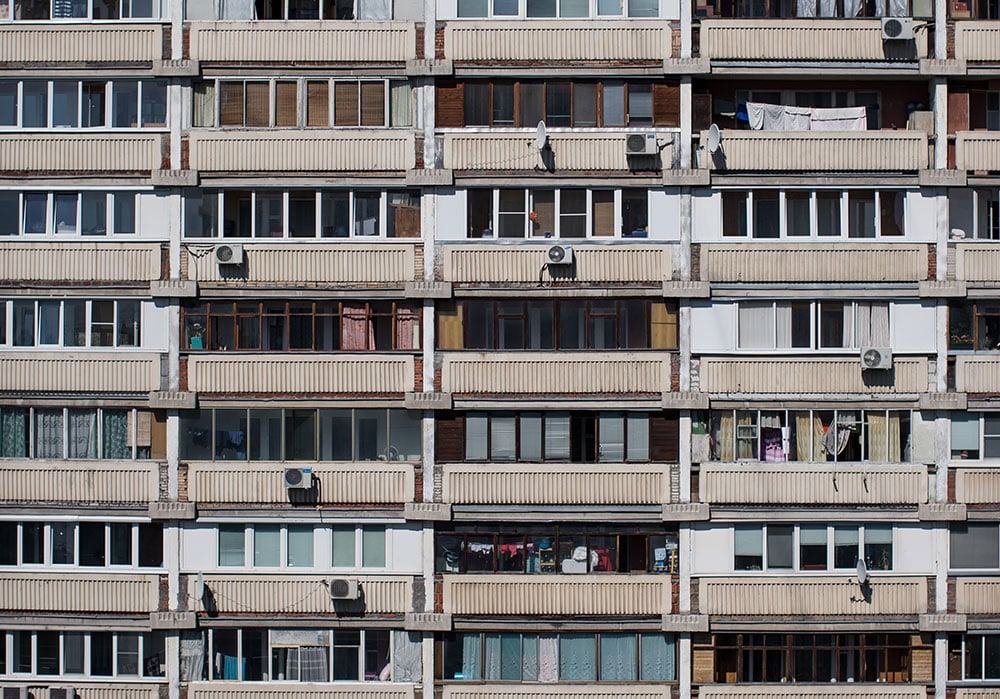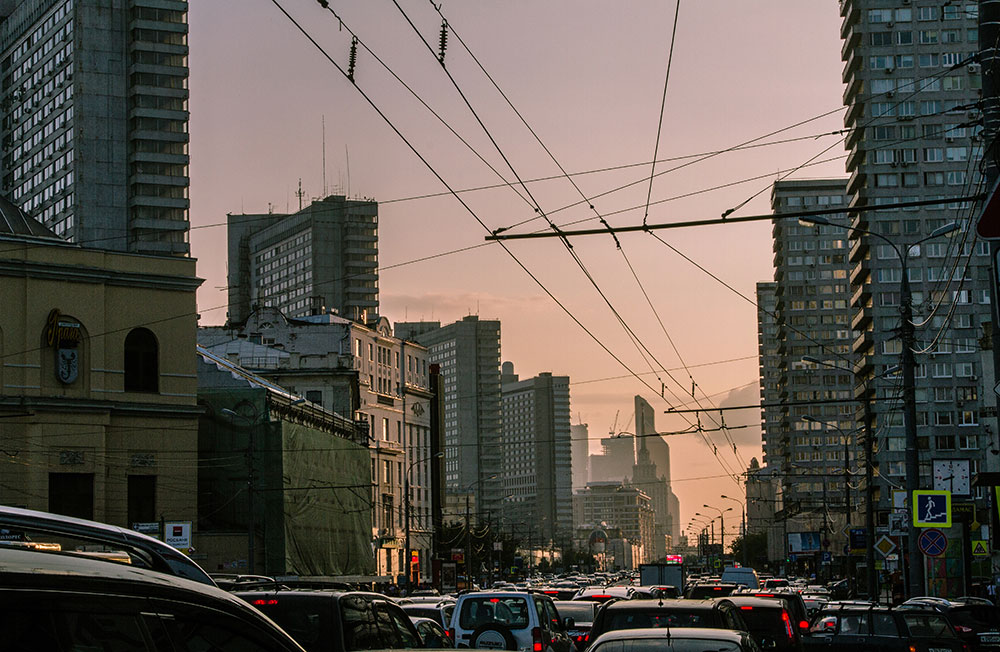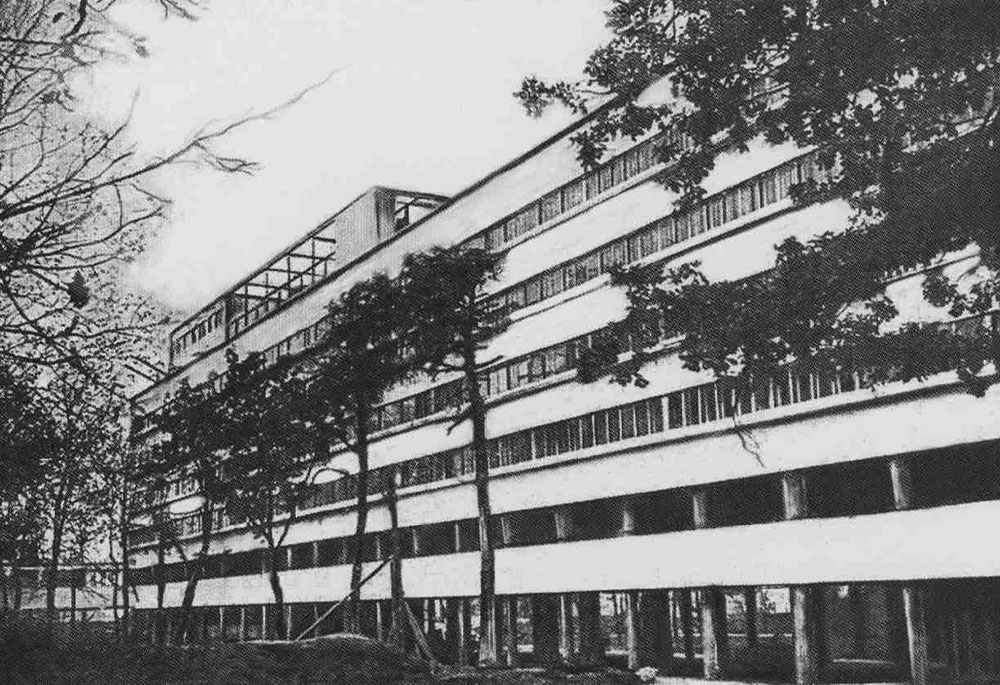Grand plans: Le Corbusier in the USSR
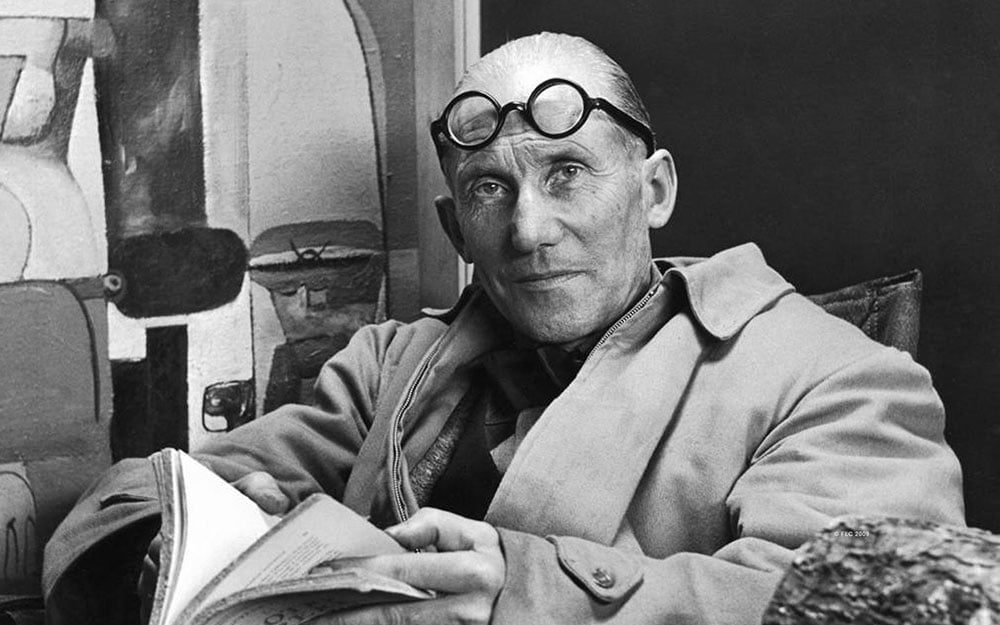
In the 50th anniversary year of Le Corbusier's death, Sam Kinchin-Smith considers the historical and contemporary resonances of the great modernist architect’s five-year fascination with Moscow
By the later years of the 1920s, Charles-Édouard Jeanneret-Gris, better known as Le Corbusier, was done with Western Europe. His design for the League of Nations Palace in Geneva, an audacious attempt to break with centuries of tradition by prioritising function over established form in a major state building, had been rejected in favour of a proposal by the 74-year-old author of the neoclassical Sorbonne, Henri Paul Nénot. France and Switzerland were proving themselves to be too milksop-minded for his vision for a ville contemporaine, a contemporary city. So in a move he would pull throughout his career, Corbu looked to the east.
What did he expect to find in the fledgling USSR? The reverence that he craved? Certainly that: the Constructivists, who were remaking Russian cities with severe fantasies of aluminium and glass, worshipped his work as the platform on which to build their own communist functionalism. But more important than that, what he identified in Bolshevism was the potential for “bigness”: “Bolshoi means big. Bolshoi means: everything as big as possible, the biggest theory, the biggest projects. Maximum…” And if there’s one thing Le Corbusier can’t be accused of lacking — and over the years, and particularly this year, he has been accused of lacking quite a lot — it’s a sense of scale.
His plans for a Paris Contemporaine made Haussmann look like Betjeman. He proposed bulldozing most of the central arrondissements north of the Seine to create a tabula rasa, upon which would be built a barley field of identical, 60-storey cruciform towers.
Similarly spectacular schemes would eventually overwhelm his time in Moscow, as well as many of the subsequent phases of his career, culminating in Corbu creating much of the built environment of Chandigarh, the first planned city of a newly independent India. What makes the characteristic cocktail of hubris and vision, influence and rejection that defined his engagement with the Soviet Union particularly significant, though, is the way these five years are located at the fulcrum of several levers of history: of Le Corbusier’s career, of interwar Russian politics, as expressed by architecture, and of the development and redevelopment of Moscow, a story that continues to this day.
In 1928, Le Corbusier was invited to enter a closed competition to find a design for the new headquarters of the Central Union of Consumer Cooperatives in Moscow. His winning proposal became the Tsentrosoyuz building in the north-east of the city, an “orgy of glass and concrete” (Hannes Mayer) and red tuff stone from the Caucusus. A massive expression of the preoccupations he’d attempted to resolve with his League of Nations Palace (above all, the circulation of human traffic; Corbu saw the problems of administrative buildings as essentially identical to those addressed by urban planners) it now houses Rosstat, the Russian Federal State Statistics service that, appropriately enough, monitors many of the indicators that prove or disprove the efficacy of functionalist architecture and city planning.
The completion of such an ambitious building, coupled with a reception that led Le Corbusier to write in his diary that “I am very well known, very popular,” encouraged him to start thinking really really big again. He began to investigate Russian society, venturing into the countryside and sketching Moscow’s streets, quickly identifying a city built “for the age of the horse”. As ever, his survey was as much about Le Corbusier as it was about its subject — he was able to reverse his conclusion that Moscow was a fertile environment for modernist revolution with dizzying speed, when the time came — but by 1931 he felt sufficiently informed to accept a Soviet commission to write a “Response to Moscow”.
Le Corbusier’s report drew on observations he’d previously published in Precisions on the Present State of Architecture and City Planning (1930), which were themselves based on notes he scribbled during a journey from Moscow to Paris, breathlessly stoked about the Constructivists’ plans to build “Green Towns” a few miles outside major industrial cities to provide a humane counterpoint to the terrifying workload of Stalin’s first Five Year Plan:
“Youthfulness everywhere, in these plans. That astonishes us a little, we Parisians crushed by an omnipotent academism … In the USSR Sunday has been suppressed, the rest period of the fifth day has been introduced. This rest period comes by turns; every day of the year, one fifth of the population of the USSR is at rest … It was therefore decided to create Green Towns devoted to the rest period of the fifth day. Here is the program of the Green Town of Moscow: The site measures 15 kilometres by 12, its altitude varies from 160 to 240 metres. It is covered by big forests of pines with fields and pastures between them, there are little rivers, which a dam will turn into a lake in the part used for sports. The ‘Green Town’ of Moscow will be developed like an enormous hotel where the inhabitants of Moscow will come to rest every fifth day in turn, in accordance with precise schedules. The architectural problem is thus to create a rest unit for a man or a household, to group these units in a building, and to distribute these buildings ingeniously on the site.”
Inevitably, Corbu’s Response applied these utopian principles in a manner that proved too iconoclastic for the Soviet authorities. With inimitable tone-deafness he proposed levelling the historic heart of Moscow (save for the Kremlin, Red Square, the Bolshoi Theatre and the Lenin Mausoleum, an almost touchingly naive Leninist cap-tip to heritage). In its place would rise a city strictly segregated into commercial, business, entertainment and residential zones. The residential areas would contain huge prefabricated unité apartment buildings flanked on all sides by parks, Green Town-style. The centre of the city would bristle with cruciform towers designed to accommodate, wait for it, between 500,000 and 800,000 workers each.
Having already rejected home-grown Green Town proposals on the grounds of their impracticality and cost, Soviet officials were hardly likely to accept a Swiss-French suggestion that these radical principles should not only be accepted but also picked up and dropped on top of the historic churches of central Moscow. Le Corbusier’s Response was rejected. To add insult to injury, his entry in the contest to design another Palace, this time “of the Soviets”, was unceremoniously dumped out of another competition in favour of another neoclassical fossil called Boris Iofan. History had repeated itself, another European power had revealed its fundamental lack of modernist credentials, and a furious Corbu returned to France.
The next regime to catalyse Le Corbusier’s futurist ambitions would prove to be even more controversial: the Nazi collaborationists at Vichy.
Pinpointing the significance of the years 1928-1932 in the story of Corbu’s career and of 20th-century Russian history, as expressed by architecture, is pretty straightforward. Le Corbusier’s Response to Moscow underwent only minor adjustments before it was re-published in 1933 as La Ville Radieuse, the Radiant City. This generalised urban masterplan (all references to Moscow were expunged) would be the methodological basis of almost everything Corbu built next, from the Unités d’Habitation of Marseille, Nantes and Berlin, to the Chandigarh buildings — as well as innumerable projects he had no direct involvement in, from the radiant city plan of Brasilia to the housing estates of post-war Britain. In other words, arguably the most influential ideas about planning and architecture of the entire 20th century were both directly informed by Russians (like Moisei Ginzburg, Mikhail Barshch and Konstantin Melnikov) and the product of the unique psychogeography of Moscow during the first years of collectivisation. This is a legacy students of the creativity of the first decades of the USSR should probably be more aware of.
Similarly, while the Palace of the Soviets competition has long been interpreted as a kind of year zero for the rise of a Stalinist architecture of neoclassical, art deco, monumental propaganda and post-war forms, and the fall of utopian functionalism, the international dimensions of this transition (of which Le Corbusier was maybe the most important victim) have been underplayed.
One only has to glance at the Seven Sisters of Moscow’s skyline, or spend a minute on the Metro, to appreciate the impact of this architectural u-turn on the city’s built environment. Indeed it’s not an unreasonable stretch to suggest that the reversal and replacement of modernist urban redevelopment, often the direct result of Stalin’s patronage and tightening grip on Russia’s cultural and aesthetic infrastructure, is the most striking (and enduring) symbol of the centralisation, cult of personality and terror of High Stalinism. To suggest that Le Corbusier had any direct impact on this direction of travel would be difficult to prove. The evidence seems to suggest that Stalin rejected the modernist proposals for his new palace simply because, like most mad dictators, he had a weakness for Doric columns and entablature. It is probably fair to say, though, that Corbu’s stomping retreat from the USSR was a precursor to Stalinism’s wider shift away from internationalism and towards Socialism in One Country. As the German architect Hans Schmidt put it, reflecting on the rejection of entries by gifted compatriots including Gropius and Mendelsohn, “the outcome of the competition for the Palace of the Soviets has filled all radical architects in the West with indignation and disbelief”.
Such sentiments were to become commonplace among Western European radicals of all stripes in subsequent decades. That this appreciation of context positions Corbu on the right side of history for a change — in the early 1930s, anyway — should also not go unrecognised.
Identifying contemporary resonances is harder, but not impossible. Moscow has, in the last decade, been subjected to more numerous and dramatic proposed planning revolutions than at any moment since the years of futile attempts to realise Stalin’s Moscow Master Plan of 1935. This month, the Moscow Urban Forum took place for the fifth time at the Manege Hall. One of the organisations behind this new conference is Strelka, an institute founded in 2009 to “change the cultural and physical landscapes of Russian cities”. Both institutions presumably spend a sizeable proportion of their time identifying precisely where Moscow is at after three new master plans in as many years: the former mayor Luzhkov’s General Plan of 2010; the master plan for doubling the territory of Moscow that resulted from the 2012 competition won by Antoine Grumbach and Jean-Michel Wilmotte; and a new master plan for the suburbs announced by Mayor Sobyanin at the 2013 Urban Forum, the roll-out of which was supposed to begin in 2015. I daresay numerous other schemes have emerged, in the intervening years, from Moscow’s dedicated Master Plan Institute.
Sobyanin’s announcement was notable for its deployment of Le Corbusier-esque ideas, such as the razing of old buildings, an emphasis on access and proximity to public transport, and the transformation of peripheral sectors of the city into cultural and employment zones. So too were former Culture Head Sergei Kapkov’s largely successful efforts to remodel Moscow’s parks and public areas into spaces Muscovites actually wanted to rest in. With Kapkov’s high-profile resignation earlier this year provoking widespread concern that some of the more effective planning initiatives of Moscow’s recent history might be halted or even reversed, one might argue that there has never been a better time to look again at one of the 20th century’s great geniuses’ wildly influential reflections on Moscow’s exceptional potential — and identify further contemporary resonances.
Perhaps it’s time, once again, for Moscow to ask itself the question: what would Corbu do?
The author would like to acknowledge this essay’s debt to Ross Wolfe’s extraordinary blog, The Charnel-House.
